By Jean Huon
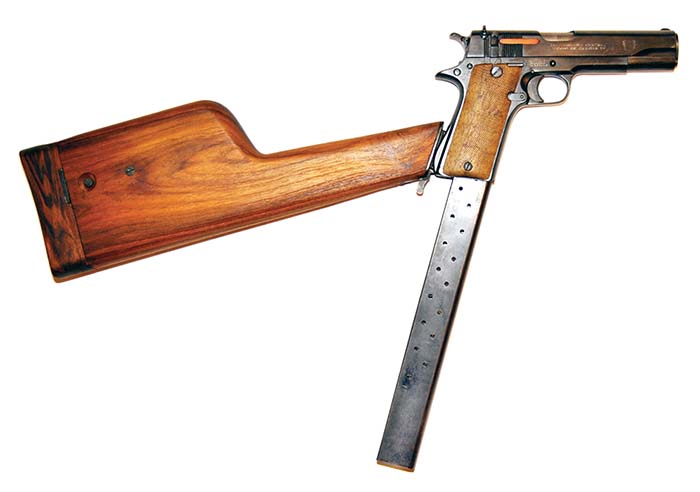
Star pistol with stock, selector and 50-shot magazine.
José Cruz Echeverria was an established gunsmith in Spain in Eibar in the Basque province during the 19th century. He manufactured muzzle-loading firearms.
His two sons Julian and Bonifacio joined the firearms business in 1905. They produced shooting rifles and in 1908 a .25 ACP pistol which was very similar to the Mannlicher 1900 pistol. It was proposed as the “Star” pistol.
In 1910, Julian left the business, and Bonifacio expanded it and began improving his pistol. It was offered as a new model in 1910, a .32 caliber with a new ergonomic design.
The company was also subcontracted by Gabilondo y Urresti to produce the Ruby pistol for the French Army at the beginning of WWI, but Bonifacio Echeverria also produced his M1910 pistol for the French military, with a 5-inch (7 shots) and 5.5-inch barrel (9 shots). He sold approximately 23,000 to 25,000 pistols between August 5, 1915, and October 1, 1918.
Later, Star made a simplified copy of the Colt M1911 pistol, and some models received a selector for automatic fire. It fired more than 1,000 rounds per minute! Later a “speed device” was adopted.
In 1934, Star proposed the I.S. 34 semi-automatic carbine developed by Isaac Irusta and Valentin Suenaga. It had a rifled 9mm Largo barrel, a 40-shot magazine and a sight for shooting from 50 to 1,000 meters. One year later, a submachine gun derived from the I.S. 34 appeared but with a selector.
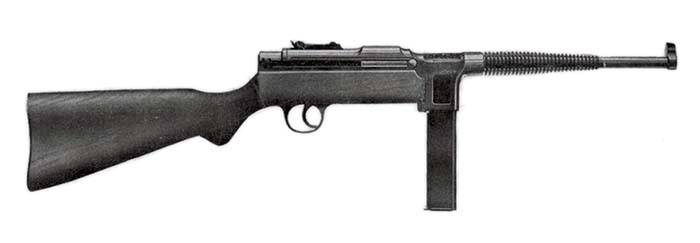
Star I.S. 34 carbine. (Star)
STAR Si35
Also inventors of this gun, Suenaga and Irusta gave the initials of their name to it. Production began just before the Spanish Civil War, and this weapon was used occasionally during this conflict.
It had a classic style with a wooden carbine stock; the frame is cylindrical, and the barrel is mounted inside a tubular cooling sleeve with oval holes. It receives a lug for the Spanish Mauser bayonet. A plug is screwed at the rear of the frame, and the cocking lever is on the right.
The main part of the bolt is a cylinder with reduced diameter head, where the firing pin is to be found. It receives also a hammer, a bolt lock and an elevator. The main spring is behind the hammer. Two levers are found on the left side of the stock. The front lever selects Safe or Fire.

Star Si35, left, with the two levers: selector and low or speedy cyclic rate. (Star)
The rear lever allows one to choose between single shots and two cyclic rates for automatic shooting: 300 rpm or 700 rpm.
The barrel is 9mm in diameter with six right-hand grooves. A compensator is fitted to the muzzle.
The rear sights are of a conventional type allowing aim from 50 to 500 meters (50m scale) and 500 to 1,000 meters (100m scale) The front sight is protected by ears. Magazines are not of sheet metal but milled! 10-, 30- or 40-shot magazines may be encountered. Some have side slots to see the amount of remaining cartridges.
How Does the Star Si35 Work?
The recoil spring pushes back the bolt to the front. A cartridge is pushed into the chamber; the bolt is closed. The hammer moves forward, the lock is pushed up and the firing pin ignites the primer. The shot goes off, and the recoil of the bolt is delayed. This is the result of the friction of oblique ramps on the hammer and on the lock. The bolt is now unlocked and can move backwards. The empty case is ejected. After firing of the last round in the magazine, the bolt is stopped in the rear position.
To disassemble and reassemble the Star Si35, one must do the following:
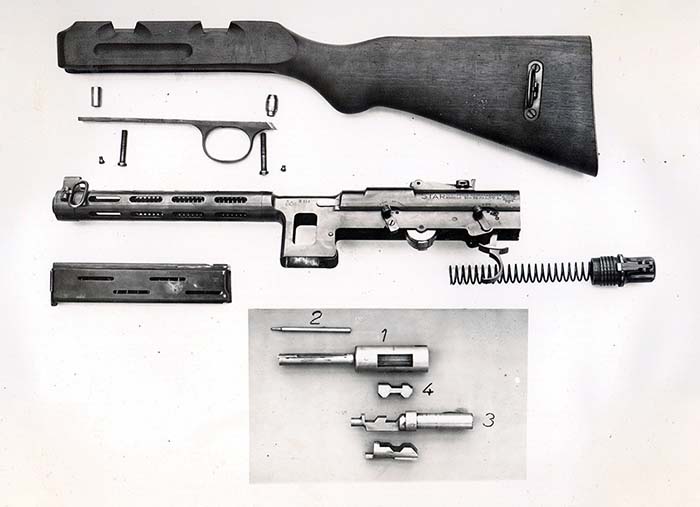
7.65mm long Star Si35 disassembled—a very complicated delayed blowback bolt for a low-power cartridge.

Star 1940 disassembled. This model is simpler than the Si35.
- Remove the magazine and clear the gun.
- Unscrew the plug at the rear of the receiver.
- Remove the recoil spring.
- Extract the bolt, hammer, lock and elevator.
- The reassembly is carried out in the reverse order.
Star R.U. 35
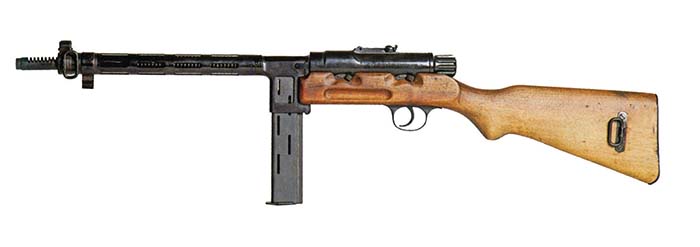
Star R.U. 35, left. (Arms Industry Museum of Eibar)
This model is similar to the Si35 SMG, but it can only fire at the low rate (300 rpm). It is designated as “R.U. 35,” because these letters are the second letters of the designers’ names.
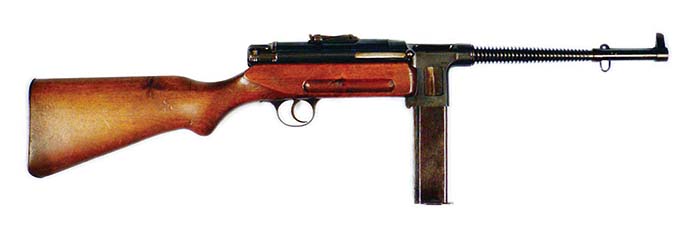
Star Si35, right.
Like the Si35, some of them were used during the Spanish Civil War (1936–1939). In 1940, the Atlantic Importing Company, an American subsidiary of the Star company submitted an R.U. 35 SMG to the Aberdeen Proving Ground. The gun was not retained because it was too complicated, too expensive to build and it did not shoot the .45 ACP cartridge. At that time the United States was at peacetime and had enough Thompson SMGs.
Star T.N. 35
The Star T.N. 35 is also a variation of the initial model, but only the high rate of fire was retained (700 rpm). The designation uses the third letter of the designer’s names. In 1942, a variation of the T.N. 35 labeled “Atlantic” was again proposed to the U.S. Army. It shot the .38 Auto cartridge which is similar to the 9mm Bergmann-Bayard (9mm Largo in Spain). The cyclic rate was reduced to 508 rpm, with a new trigger mechanism and a front wooden grip. This model was again brushed off.
Star 7.65mm Long
In 1940 a variation of the Si35 SMG, shooting the French 7.65mm Long cartridge (similar to .30 Pedersen), was proposed to the French Army, but at this time it was too late to look for production.
Star 1940
The Star 1940 SMG is a variation of the T.N. 35. It fires the 9mm Luger cartridge (9x19mm). Its design was made simpler. The frame was made of sheet metal; the trigger mechanism and the rear plug were a single part. A single selector lever was used for safety, single shots and automatic fire. The bolt is cylindrical with a small diameter recoil spring and is blowback-operated. This model was proposed to the French, British and German Armies.

Star 1940, right.
Star submachine guns received limited production orders up to 1944. The model Z-45 appeared thereafter. It was largely used by the Spanish Army and the Guardia Civil (see Small Arms Review, Vol. 11, No. 2, 2007)
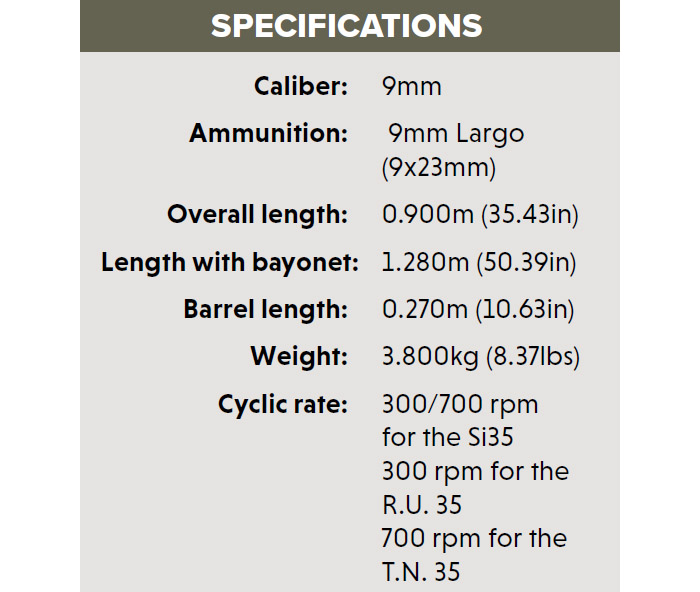







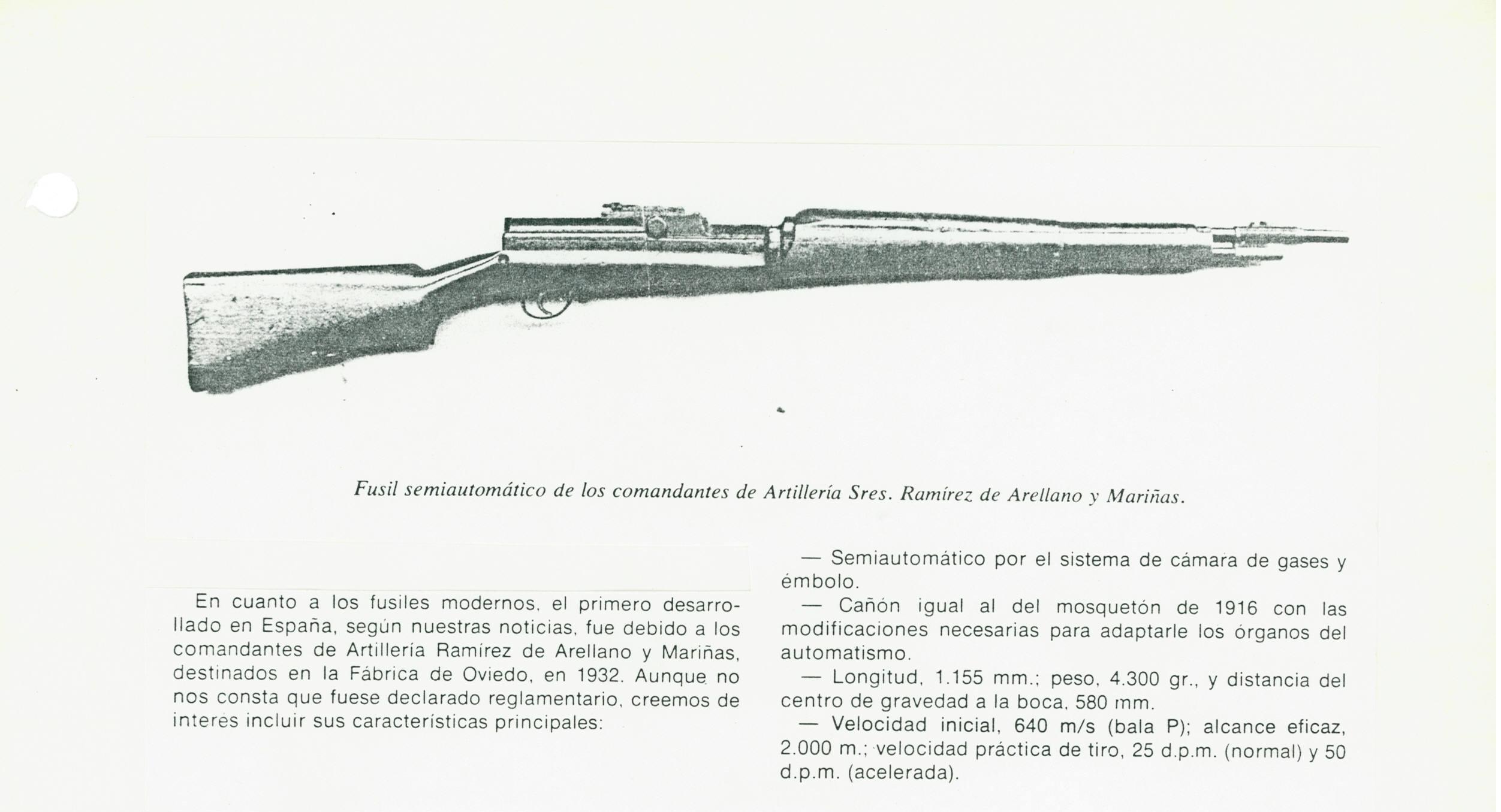















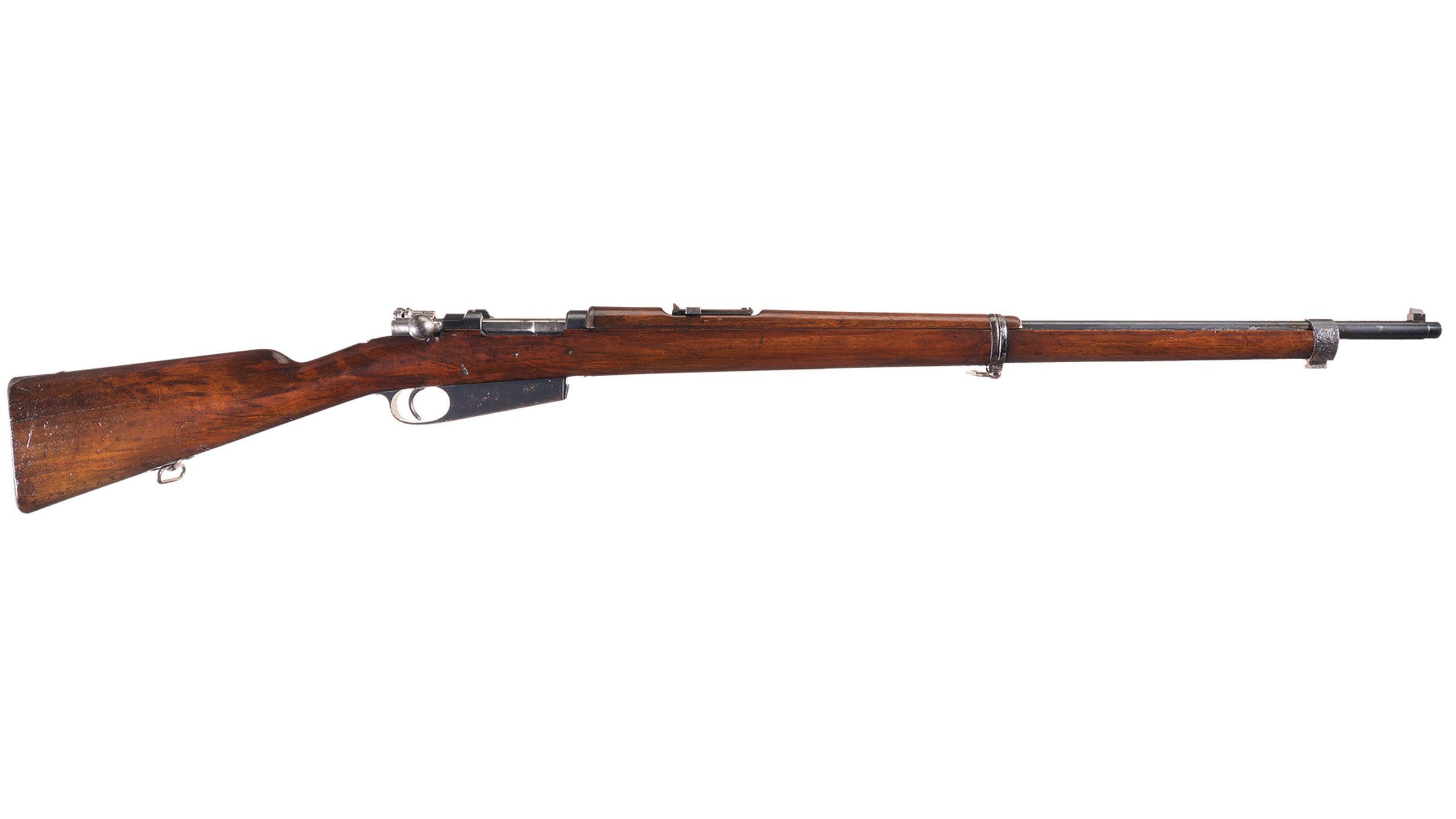 .
. 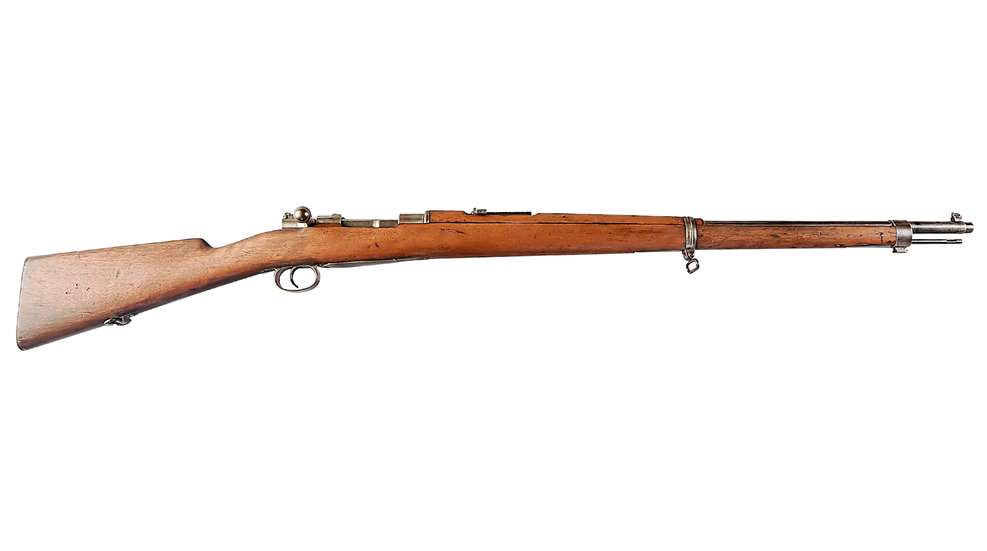 .
. 
 .
.  .
. 